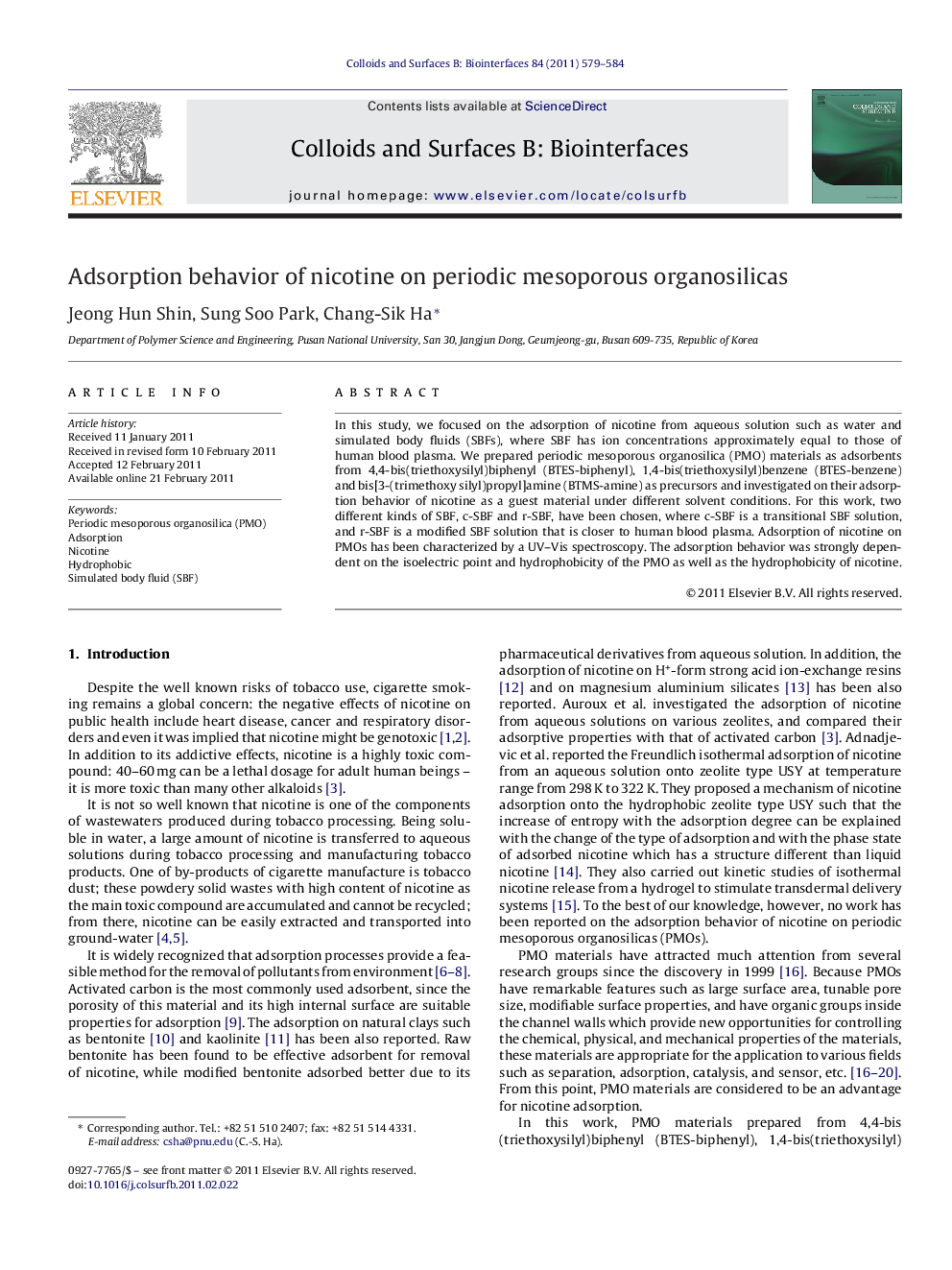| Article ID | Journal | Published Year | Pages | File Type |
|---|---|---|---|---|
| 601170 | Colloids and Surfaces B: Biointerfaces | 2011 | 6 Pages |
In this study, we focused on the adsorption of nicotine from aqueous solution such as water and simulated body fluids (SBFs), where SBF has ion concentrations approximately equal to those of human blood plasma. We prepared periodic mesoporous organosilica (PMO) materials as adsorbents from 4,4-bis(triethoxysilyl)biphenyl (BTES-biphenyl), 1,4-bis(triethoxysilyl)benzene (BTES-benzene) and bis[3-(trimethoxy silyl)propyl]amine (BTMS-amine) as precursors and investigated on their adsorption behavior of nicotine as a guest material under different solvent conditions. For this work, two different kinds of SBF, c-SBF and r-SBF, have been chosen, where c-SBF is a transitional SBF solution, and r-SBF is a modified SBF solution that is closer to human blood plasma. Adsorption of nicotine on PMOs has been characterized by a UV–Vis spectroscopy. The adsorption behavior was strongly dependent on the isoelectric point and hydrophobicity of the PMO as well as the hydrophobicity of nicotine.
Graphical abstractFigure optionsDownload full-size imageDownload as PowerPoint slideResearch highlights► Adsorption behavior of nicotine in water, c-simulated body fluid, and r-simulated body fluid on periodic mesoporous organosilica (PMO) materials. ► PMOs were prepared from 4,4-bis(triethoxysilyl)biphenyl, 1,4-bis(triethoxysilyl)benzene and bis[3-(trimethoxysilyl) propyl]-amine as precursors. ► The hydrophobicity is important in nicotine adsorption. ► This system could be expanded to the removal of nicotine from the contaminated water and air, as well as human body.
